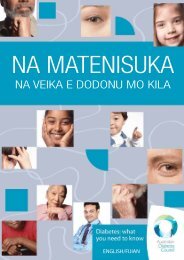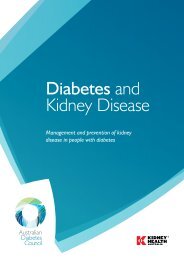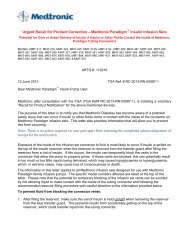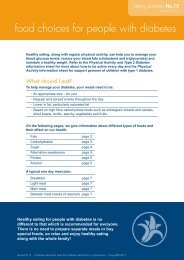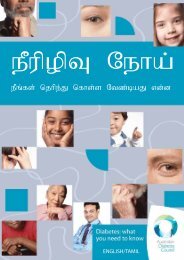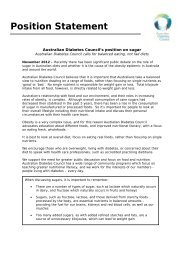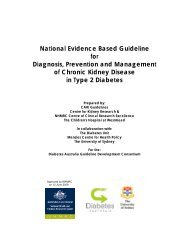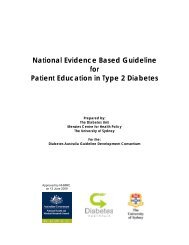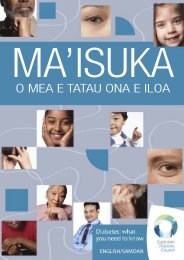Part 6: Detection and Prevention of Foot Problems in Type 2 Diabetes
Part 6: Detection and Prevention of Foot Problems in Type 2 Diabetes
Part 6: Detection and Prevention of Foot Problems in Type 2 Diabetes
Create successful ePaper yourself
Turn your PDF publications into a flip-book with our unique Google optimized e-Paper software.
The rate <strong>of</strong> plantar callus formation <strong>and</strong> the need for debridement can be reduced byathletic runn<strong>in</strong>g shoes (Soulier et al, 1987). In a pre <strong>and</strong> post test case series 78 peoplewith a mean age <strong>of</strong> 55 years wore runn<strong>in</strong>g shoes for a m<strong>in</strong>imum <strong>of</strong> 9 months. Theparticipants had the size <strong>of</strong> their calluses assessed monthly <strong>and</strong> it was found that therewas a significant change <strong>in</strong> the average size <strong>of</strong> the callus after 10 months (t=-3.32,p=0.001 <strong>and</strong> the need to have calluses trimmed was also decreased.).Padded socks reduce plantar pressurePlantar pressures can also be <strong>in</strong>fluenced by socks. The effects <strong>of</strong> experimental paddedhosiery was studied <strong>in</strong> 10 people with diabetes <strong>and</strong> cl<strong>in</strong>ical neuropathy <strong>and</strong> comparedwith commercially available sports socks <strong>in</strong> another 16 people with diabetes.Experimental padded hosiery reduced plantar pressures by 31.3% (p



